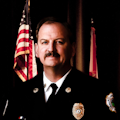You hear it over and over: One person or a small group of the organization does all of the work. Also: This generation isn’t as committed as we are. The EMS and fire blogs are full of content about management and leadership failures. Recruitment is down, and where there once were thousands applying for firefighter positions or EMT classes, the numbers slumped dramatically. Although COVID might be to blame for a portion of that, there is a growing recognition that the generic experience doesn’t attract the best or brightest. Stories of significant numbers of people who just walk away from EMT and paramedic classes or a rookie school are becoming more common. The large private ambulance services are struggling to find quality frontline supervisors. Fire service personnel are reluctant to come off of the 56-hour work week and take a leadership or management role.
Engaging young potential
Generation Z (born after 1996) presents some unique challenges. The Pew Research Center says that Gen Zers are considered “educationally engaged,” which means they are looking to improve upon themselves. Unfortunately, this doesn’t equate to excitement for online learning or training in the fire service and EMS, as we currently deliver it. More so, the education experience must be custom for them. Enter the opportunity for mentoring to set someone on the proper path in EMS and emergency services.
Paramedic preceptor programs and, ideally, a fire or EMS internship is in place in many organizations. Both are formal training programs, but they are much different than mentoring. They fall more into the realm of coaching.
Fire and EMS chiefs often talk about succession planning but rarely put that critical piece of mentoring into the development process. Seldomly is it offered in the entry-level positions.
A national EMS mentoring program is on the horizon. As the structure and process of that program begins to take shape, it is important to define mentoring.
Mentoring, unlike coaching, is a long-term relationship, often years versus the few months that an internship or preceptor program usually spans.
A mentoring program focuses on developing people as compared with EMS preceptor programs or internships, which focus on performance or establishing competency—for example, getting a new paramedic to a level of functionality in the field for the systems in which he/she is employed.
Mentoring sessions commonly are informal. Coaching employees is more structured; often, there is some form of documentation that’s related to performance.
With the idea of what keeps employees engaged, what attracts them to the organization and what develops the leadership in the organization comes a personalized plan. The selection and participation of a mentor in a formal program requires a person who has knowledge in a variety of EMS or fire topics and has demonstrated giving sound career advice. For example, a common concept in emergency services is to “guard your speech,” which can come with a wide variety of responses, more easily guided by a mentor. In that role, the mentor should function as the go-to person, to provide mentees with moral and career support.
One of the first steps does mirror the coaching scenario: Both people should establish what a mentee, or protégé, expects from the relationship, match it against clear expectations and reach consensus. The mentor and mentee must set a clear time to speak weekly and be disciplined about keeping their scheduled meetings.
Effective mentors educate mentees about the standards of the profession, what traditionally is referred to as the affective domain of emergency services.
This becomes a guided journey of discovery, and this is the magic of mentoring. Mutual respect and an appreciation for the mentor’s time is key along with a responsibility of the mentee to develop properly, or both reputations suffer.
Minus the barriers
As you search for the best people to bring into your organization—and maybe alignment of people with the organization’s culture—it’s possible that reaching down into the high school and college ranks is key to selecting mentees. In many ways, this is developing the person from scratch rather than inheriting behaviors and thoughts that were acquired in another space and that serve as a barrier to EMS development.
This personal commitment to a mentee’s development resonates with the youngest generations. More importantly, it passes on the wisdom of the organization and of the leadership.
Relationships build better teams. A better team takes your services to the next level. Next-level services do better for your constituents.
About the Author

Bruce Evans
Fire Chief
Bruce Evans, CFOD, SEMSO, NRP, MPA, is the fire chief for the Upper Pine River Fire Protection District, which is located outside of Durango, CO. He retired as an assistant chief from the North Las Vegas Fire Department after serving 27 years in Southern Nevada’s Fire and EMS system. Evans has been a course developer for many of the National Fire Academy curriculums and serves as a technical writer. He is the recipient of the prestigious 2010 James O. Page EMS Achievement Award and was awarded the NAEMT Presidential Leadership Award in 2014. The Colorado Governor appointed Evans to the State Emergency Medical and Trauma Advisory Committee in 2014. He is NAEMT’s liaison to the National Academies of Medicine preparedness committee and coauthored texts on EMS management and crew resource management and wrote a text on EMS quality improvement.
